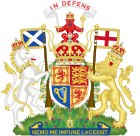Land Reform (Scotland) Act 2003
 | |
| Long title | An Act of the Scottish Parliament to establish statutory public rights of access to land for recreational and other purposes, and to extend some of the provisions for that purpose to rights of way and other rights; to make provision under which bodies representing rural and crofting communities may buy the land with which those communities have a connection; and for connected purposes. |
|---|---|
| Citation | 2003 asp 2 |
| Territorial extent | Scotland |
| Dates | |
| Royal assent | 25 February 2003 |
| Other legislation | |
| Relates to | Community Empowerment (Scotland) Act 2015, Land Reform (Scotland) Act 2016 |
Status: Current legislation | |
| Text of statute as originally enacted | |
| Revised text of statute as amended | |
The Land Reform (Scotland) Act 2003 is an Act of the Scottish Parliament which establishes statutory public rights of access to land and makes provisions under which bodies representing rural and crofting communities may buy land.[1]
Provisions
The 2003 Act includes three main provisions: the creation of a legal framework for land access, the community right to buy, and the crofting community right to buy. The first part of the act codifies into Scots law the right to universal access to land in Scotland. The act specifically establishes a right to be on land for recreational, educational and certain other purposes and a right to cross land. The rights exist only if they are exercised responsibly, as specified in the Scottish Outdoor Access Code. Access rights apply to any non-motorised activities, including walking, cycling, horse-riding and wild camping. They also allow access on inland water for canoeing, rowing, sailing and swimming.
The second part of the act establishes the community right to buy, allowing communities with populations of up to 10,000 to register an interest in land, entitling them to first right of refusal should the owner put the land up for sale or intend to transfer ownership, provided a representative community body can be formed to carry out the purchase.[2]
Finally, the third part establish the crofting community right to buy which allows crofting communities to purchase crofts and associated land from existing landowners. It differs from the community right to buy in that it can be exercised at any time, regardless of whether the land has been put on the market, allowing crofting communities to purchase land even in the absence of a willing seller.[3]
See also
References
- ^ "Land Reform (Scotland) Act 2003 asp 2" (PDF). Retrieved 4 March 2017.
- ^ "Land Reform (Scotland) Act 2003: Part 2: Community Right to Buy: Guidance" (PDF). The Scottish Executive. 2004. Retrieved 4 March 2017.
- ^ "Crofting Community Right to Buy". The Scottish Government. Retrieved 4 March 2017.
